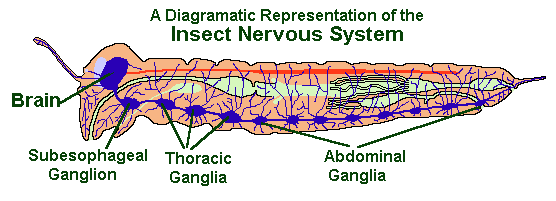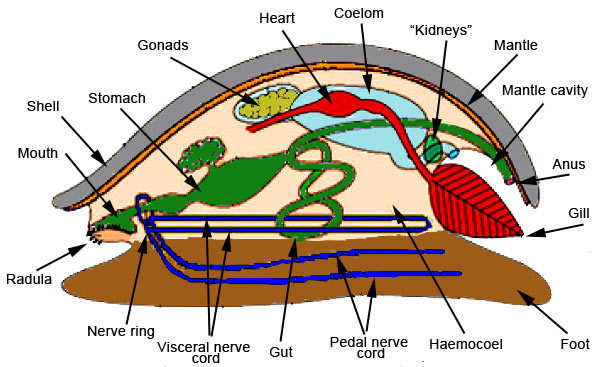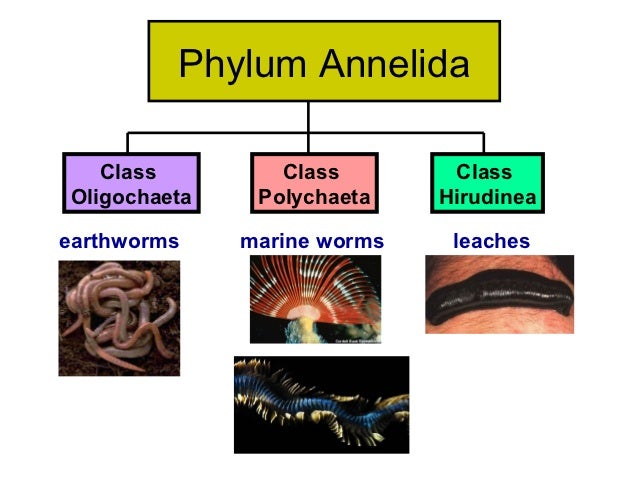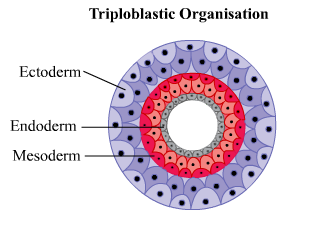November 2, 2017
Physiology of Insects and How They Survive
This week was a bit difficult in trying to identify the unknown organism. It looked like some kind of insect but it was hard to tell. First we identified it into its supper family Coccoida, then once we identified that it seemed fairly easy to identify the organism to species. Turns out the unknown organism was a Cottony Cushion scale. Which belongs to the order Hemiptera, and the suborder Sternorrhyncha.
In Hemipterans the mouth, or “beak”, is modified mandibles and maxillae to form a “stylet”. Sternorrhyncha refers to the location of their mouth which is towards the rear of the head of the organism. When the organisms are not feeding the mouth is usually folded up and under the body. Hemipterans are typically parasites that feed on plant sap. In order to ingest the sap the mouth is built up of two channels. One to let liquid food in and the other to pump their saliva into the food source. To help this process they inject enzymes which are in their saliva to begin digestion before it is ingested.
Hemipterans have wings to help them move more efficiently. Their wings are either entirely membranous in Sternorrhyncha and Auchenorrhyncha. Heteropera have partially hardened forewings that are hardened towards the base and membranous at the ends. Hemiptera has a Greek origin meaning “half wings”, “hemi” meaning half and “pteron” meaning wing. Though these wings are to help with locomotion, they are used for short distances and not for an extended period of time.
Since Hemipterans are insects and insects are found all around the world and there is an abundance of orders to try and compare and contrast this week, I will just be discussing some of the major adaptations and different features of insects to help them survive in different types of environments.
To start off the exoskeleton of insects is a major feature that helps them survive in any habitat. It gives structure to the organism and it also acts as a shell to help protect them from predators. It also helps with the loss of fluids in arid and fresh water environments. It also is a advantage to the muscles to help with agility and strength in locomotion.
Another great advantage for insects is there size. Such majority of them are fairly small organisms it makes it easier for them to hide from predators. Also If the organisms were larger it would require a lot more energy use from the organism. It would have a larger exoskeleton which would require more muscles mass to move the extra weight from the exoskeleton and the rest of the organism. With their small size they do not need as much resources as compared to a human, just based off of the size difference. A drop of water can quench their thirst and one plant could feed an organism for its whole life span. (depending on the organism, not true for all insects)
The ability of flight is a huge beneficial factor in insect survival. It allows a quick escape from predators, and it also allows for populations to expand more quickly. They can find resources faster by covering more ground.
Insects have a closed digestive system. Within the digestive system there is the alimentary canal that runs length wise through the body connecting the mouth and the anus. This canal processes the food as it travels through their body. There are three different sections of the digestive system that allow for enzyme production, grinding of food particles, nutrient absorption, and food storage. The three sections are the foregut, midgut, and hindgut. The stomatodeum (foregut) is the region that grinds and stores food. Mesenteron (midgut) is where the digestive enzymes are produced and secreted, also this is where the nutrients are absorbed. The proctodeum (hindgut) divided up into three sections, the ileum, colon, and the rectum. This is where water, slats and other substances are absorbed before excretion.

Diagram showing the foregut, midgut, and hindgut and where they are located in the body.
https://www.google.com/url?sa=i&rct=j&q=&esrc=s&source=images&cd=&cad=rja&uact=8&ved=0ahUKEwiO-KTwjufXAhUF7YMKHcLfCNEQjRwIBw&url=https%3A%2F%2Fwiki.bugwood.org%2FInsect_Biology&psig=AOvVaw31MC6U7SnQckVcLGU7dl1h&ust=1512159370047994
Insects have a circulatory system. The main function for the circulatory system is to transport nutrients, hormones, and wastes throughout the insects body. It also plays a role in helping with osmoregulation, temperature control, and immunity. It can help in the storage of water carbohydrates and fats. Insect blood is different than human blood in that it does not contain any red blood cells which carry oxygen. Hemolymph (insect blood) has molecules, ions and cells. These help with regulating the chemical exchanges with in the body.

Diagram showing how insect circulatory system operates with its respectable parts for circulation.
https://www.google.com/url?sa=i&rct=j&q=&esrc=s&source=images&cd=&cad=rja&uact=8&ved=0ahUKEwiSl-iqj-fXAhUH_IMKHRYOB8EQjRwIBw&url=https%3A%2F%2Fwww.britannica.com%2Fanimal%2Finsect%2FCirculatory-system&psig=AOvVaw3nZKlVJC7Ynuvg70CN0xT9&ust=1512159517602325
Insects do have a respiratory system but they do not have lungs. They have a system of tubes and sacs where gasses either diffuse or directly pumped to the designated area of the body. I think this is brilliant because it pumps directly to the tissues that need it but at the same time it reduces carbon dioxide because of their cells. The air is taken into the body by spiracles (openings) which are located on the thorax of the organism. Insects can have from 1 to 10 spiracles depending on the organism. Carbon dioxide is leaves the body the same way it enters the body. There are different ways in which insects can perform gas exchange depending on the species. Respiration can range from discontinuous gas exchange, diffusive ventilation, and continuous reparation. Aquatic insects do not have spiracles but they do have tracheal gills.

Insects respiratory system
https://www.google.com/url?sa=i&rct=j&q=&esrc=s&source=images&cd=&ved=0ahUKEwjQjOXwj-fXAhUK3IMKHaToAQcQjRwIBw&url=https%3A%2F%2Fwww.britannica.com%2Fanimal%2Finsect%2FCirculatory-system&psig=AOvVaw0Pr-gI4TMZaFiTheL4NScv&ust=1512159634433798
To help with locomotion insects have muscles. Unlike humans how we have smooth and striated muscles, insects only have striated muscles. There are four muscle groups that help with certain movements of the organism. Visceral muscles surround the tubes and ducts that help with the digestive system, for example. Similar to our smooth muscles in us humans. Segmental muscles that are used for molting and locomotion in larvae that have no legs. The appendicular muscles move the legs while flight muscles do what you would expect from muscles that are called flight muscles, they help with flying.

How the muscles make the wings work
https://www.google.com/url?sa=i&rct=j&q=&esrc=s&source=images&cd=&cad=rja&uact=8&ved=0ahUKEwj8va-okOfXAhVl9YMKHb6nAVkQjRwIBw&url=https%3A%2F%2Fprojects.ncsu.edu%2Fcals%2Fcourse%2Fent425%2Flibrary%2Ftutorials%2Fexternal_anatomy%2Flocomotion.html&psig=AOvVaw0KMglZMt7AfXuvKky7WKWS&ust=1512159747343872

How muscles make the legs move
https://www.google.com/url?sa=i&rct=j&q=&esrc=s&source=images&cd=&cad=rja&uact=8&ved=0ahUKEwiE9P26kOfXAhVD04MKHRNrADUQjRwIBw&url=https%3A%2F%2Fcommons.wikimedia.org%2Fwiki%2FFile%3AWing_Muscles%2C_color.svg&psig=AOvVaw0KMglZMt7AfXuvKky7WKWS&ust=1512159747343872
Insects also have an endocrine system that produces hormones that will stimulate processes that the organism needs in order to survive. There have been four endocrine centers that have been identified that can help with multiple functions of the organism. Neurosecretory cells are cells in the brain that produce one or more hormones that affect homeostasis, reproduction, metamorphosis and growth. There is a pair of neuroglandular bodies called corpora cardiac located behind the brain. These produce neurohormones and store and release other neurohormones that stimulate secretory activity of prothoracic glands which plays a role in molting. Prothoracic glands play a role in the molting process and reproduction in females. These glands are located either in the back of the head or the thorax. Corpora allata, secretes juvenile hormone that regulates metamorphosis and reproduction. These paired glandular bodies are located on either side of the foregut.
Insects have a complex, centralized nervous system. They have a brain, a subesophageal ganglion connected to the brain, and a ventral nerve cord. Their brains have three lobes, the protocerebrum, deutocerebrum, and tritocerebrum. Protocerebrum that is connected to the compound eyes and ocelli. Deutocerebrum are connected to the antennae and the tritocerebrum connected to the oregut and the labrum. Insects have multiple sensory organs. They have chemoreceptors that for taste and smell. Mechanical sensors such as the little hairs that are sensitive to touch, pressure and even sound. Even though those hairs can be sensitive to sound insects can also have hearing structures. They can be located from the wings, antennae, abdomen, to the legs. Insects have eyes that are very light sensitive. They can see colors as well and even in some orders of insects they can see ultra-violet light. Multiple insects have humidity and temperature sensors as well. Not until recently insects were thought to not have pain receptors but recent findings say that Fruit flies may have them. This questions, do all insects not have pain receptors.

https://www.google.com/url?sa=i&rct=j&q=&esrc=s&source=images&cd=&cad=rja&uact=8&ved=0ahUKEwi_jpeAkefXAhWK5oMKHW0QCVMQjRwIBw&url=https%3A%2F%2Fwww.earthlife.net%2Finsects%2Fanatomy.html&psig=AOvVaw0UOka2Jyo1_vJnpNmd-xhD&ust=1512159964054079
All these adaptations that the insects have acquired over the years have allowed them to inhabit multiple environments. Insects are very unique and interesting organisms.
last revised: 11/30/17
Ruppert, Edward E.; Fox, Richard, S.; Barnes, Robert D. (2004). Invertebrate Zoology, 7th edition. Cengage Learning. pp. 728, 748. ISBN 978-81-315-0104-7.
Gullan, P.J.; Cranston, P.S. (2014). The Insects: An Outline of Entomology, 5th Edition. Wiley. pp. 80–81, 790–. ISBN 978-1-118-84616-2.
Nation, J. L. (2002) Insect Physiology and Biochemistry. CRC Press.
McGavin, George C (2001). Essential Entomology: An Order-by-Order Introduction. Oxford: Oxford University Press. ISBN 9780198500025.
“General Entomology – Digestive and Excretory system”. NC state University. Retrieved 2009-05-03.
Triplehorn, Charles A; Johnson, Norman F (2005). Borror and DeLong’s introduction to the study of insects. (7th ed.). Australia: Thomson, Brooks/Cole. ISBN 9780030968358.
Duncan, Carl D. (1939). A Contribution to The Biology of North American Vespine Wasps (1 ed.). Stanford: Stanford University Press. pp. 24–29.
Elzinga, Richard J. (2003). Fundamentals of entomology (6th ed.). Upper Saddle River, NJ: Prentice Hall. ISBN 9780130480309.
SCHNEIDERMAN, HOWARD A. (1960). “DISCONTINUOUS RESPIRATION IN INSECTS: ROLE OF THE SPIRACLES”. Biol. Bull. 119 (119): 494–528. JSTOR 1539265. doi:10.2307/1539265.
Eisemann, C. H.; Jorgensen, W. K.; Merritt, D. J.; Rice, M. J.; Cribb, B. W.; Webb, P. D.; Zalucki, M. P. (1984). “Do insects feel pain? — A biological view”. Experientia. 40 (2): 164. doi:10.1007/BF01963580.
Tracey, W. D.; Wilson, R. I.; Laurent, G.; Benzer, S. (2003). “Painless, a Drosophila Gene Essential for Nociception”. Cell. 113 (2): 261–273. PMID 12705873. doi:10.1016/S0092-8674(03)00272-1.
 Filed by richa at 9:17 pm under Uncategorized
Filed by richa at 9:17 pm under Uncategorized
 186 Comments
186 Comments



.jpg)

.jpg)

